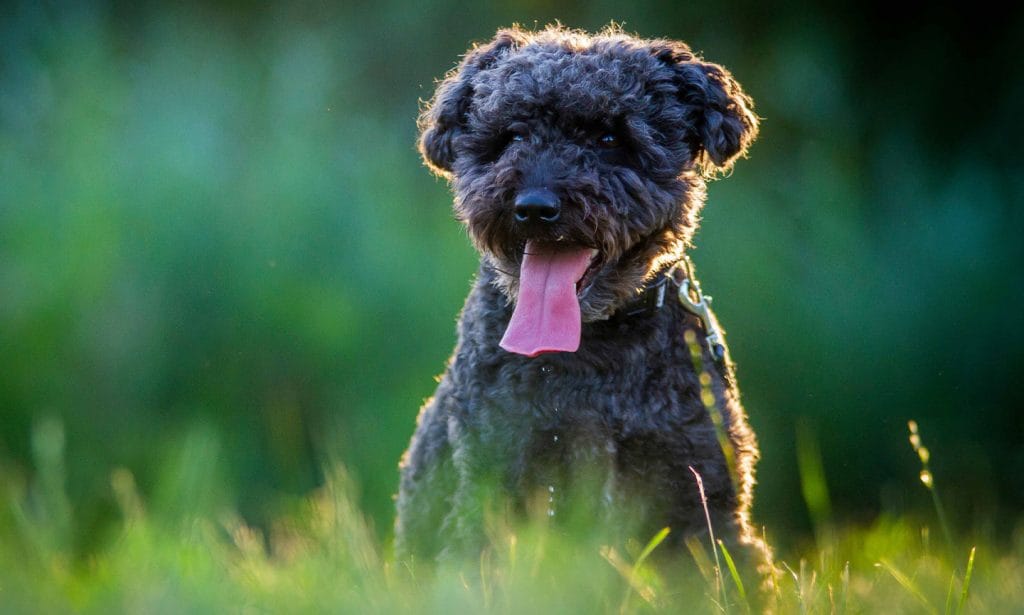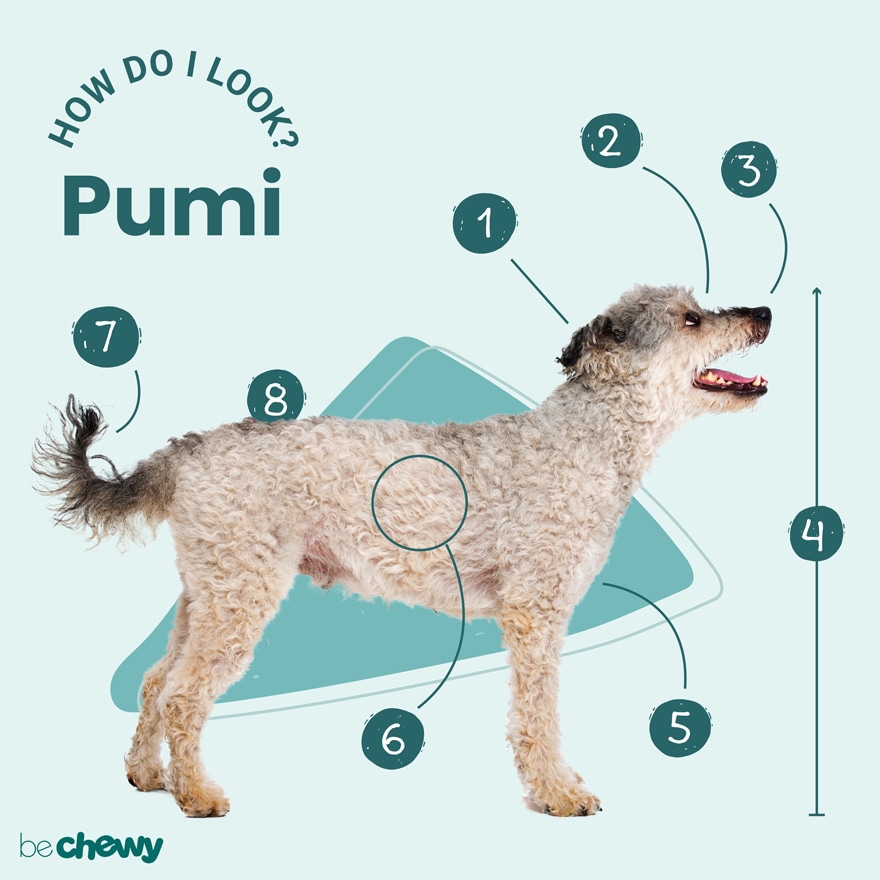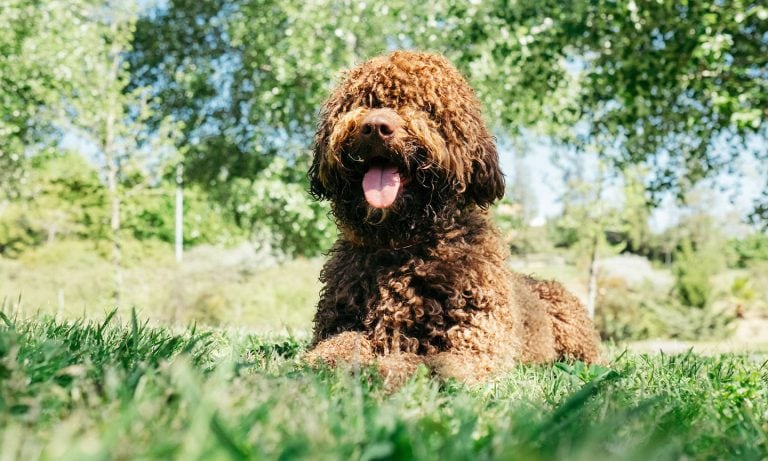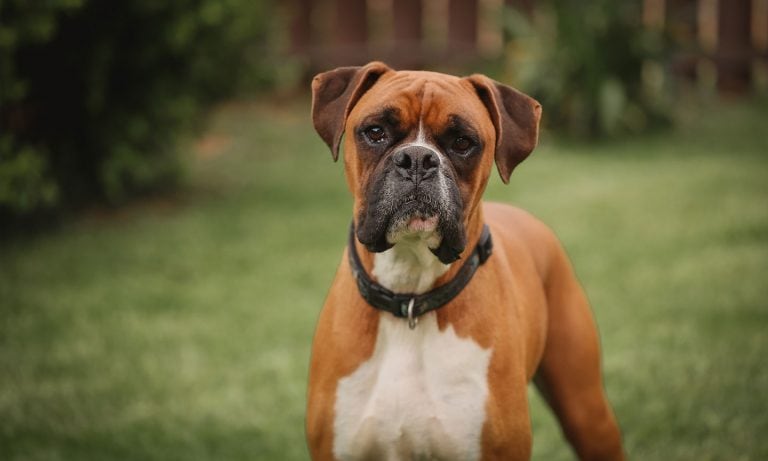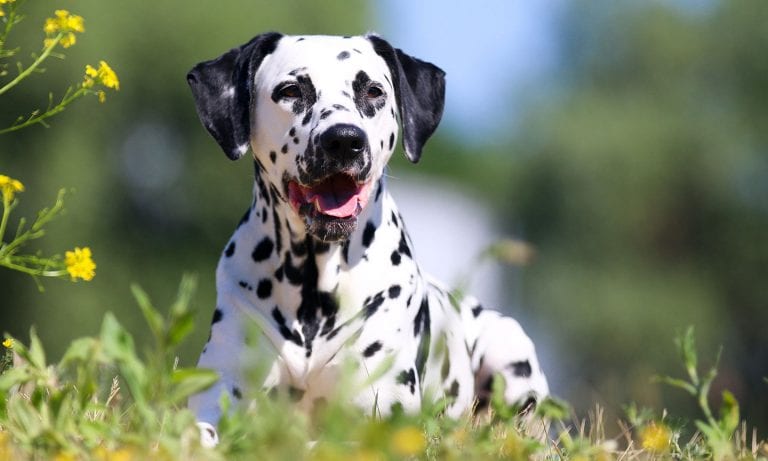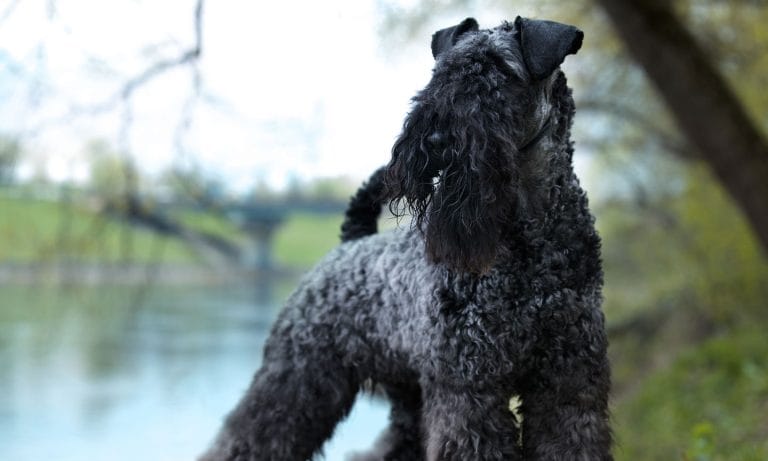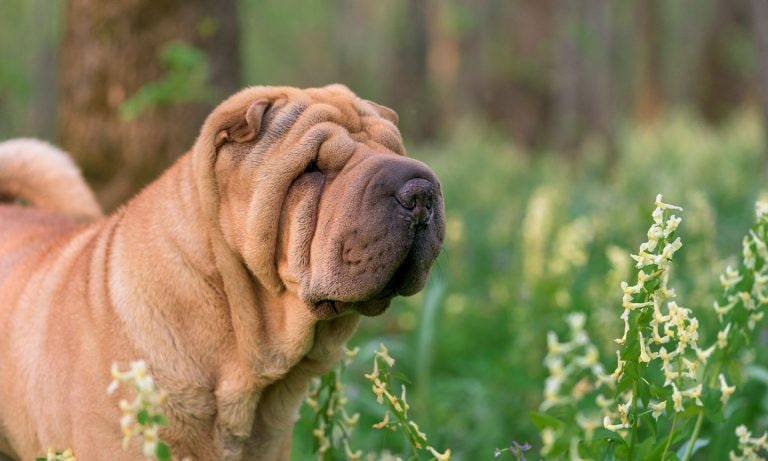Don’t be fooled by the Pumi’s adorable corkscrew curls and toy-like exterior—this active, fun-loving pup comes from a long line of working dogs. Their favorite “job,” however, is playtime with you. This curly cutie loves nothing more than to run around and explore, so if you’re partial to spending your free time in the Great Outdoors, you’ve met your match; the Pumi is as high-energy as you are. And if you ever feel a gentle nipping at your ankles, take it as a compliment—you’re part of this herding dog’s flock, after all!
Breed Snapshot
Temperament:
Faithful FriendSmart CookieBundle Of EnergyCoat Color:
WhiteSilver GrayGrayBlackFawnBorn GrayBorn Brown
Best For
Pumi dogs are intelligent and loyal pups who require minimal grooming but lots of exercise. They thrive with active pet parents and families with kids, especially if they have access to plenty of outdoor space.
Pumi Temperament
With their alert, playful temperament, the Pumi is always ready for action—especially when it includes their families, toward whom they’re incredibly loyal and affectionate. They instinctually take their protection detail very seriously, noisily alerting their pet parents (and likely the whole neighborhood) to anything and everything in the immediate vicinity. But take heart: With good socialization practices and professional Pumi training, you can reduce excessive barking and overreactions to new situations.
Not exactly social butterflies, Pumik (yes, that’s the plural of Pumi) are reserved when it comes to outsiders. All the more reason why these pups must get plenty of socialization, aka positive exposure to all sorts of people and places, starting when they are young dogs. Though they’re still likely to be aloof with strangers, they’ll be more willing to expand that circle of trust beyond their pet parents and immediate family—great news for your best friend and the local mailman.
Pumik are great with kids, particularly if introduced at a young age, and will match your toddler’s energy. Although they’re great playmates, watch out for their tendency to herd (nip at kids’ heels to round them up). That is what they were initially bred for, after all. The medium-sized Pumi is strong and built to work hard despite looking like a stuffed toy. While having your pet round up the whole brood for dinner may sound appealing, you should train your Pumi using positive reinforcement such as treats, toys and praise to keep undesired instincts at bay.
And speaking of family—that also includes the furry kind. A Pumi is happy to fit in with dogs and even cats, provided they were all raised together from a young age. Introducing a Pumi puppy to existing pets is more manageable than adding an adult Pumi to the mix.
They are happiest when keeping active with their family. One of Pumik’s strongest traits is their very vocal bark. They will let you know exactly when they’re ready for attention, which, let’s face it, is practically all the time for these people-loving pets. Parents can keep their dog thriving by engaging their Pumi in vigorous activity, indoors or out. Prepare to play fetch for hours on end with your tireless pet. You can also keep them from barking too much with an assortment of chew toys at their disposal.
How to Care for a Pumi
A Pumi pup is relatively easy to maintain in terms of nutritional needs and grooming, with surprisingly minimal attention needed to keep their distinctive curls in excellent condition. However, they need plenty of mental and physical stimulation, so plan to spend lots of time playing and exercising to create a happy life with your Pumi.
Pumi Health
With a life expectancy of 12 to 13 years, the Pumi is a relatively healthy breed, but there are a few common health issues to watch out for. Luckily, most problems are increasingly rare thanks to sound breeding practices. It’s wise to educate yourself about any potential health problems so you can keep your pet going strong.
- Hip Dysplasia: Hip dysplasia is an often-genetic orthopedic condition in which the joints do not fit together properly, resulting in laxity and rubbing. Signs of this condition can vary but can include limping, decreased activity and difficulty running or jumping. Treatment plans range from supplements to weight reduction to surgery in severe cases.
- Patellar Luxation: When a dog’s kneecap (patella) slips out of its joint, it can cause further problems in the joints, hips and legs. Excess weight can factor into luxating patellas, so Pumi weight management is one treatment option. There is also the option of surgery if the problem is more severe.
- Degenerative Myelopathy (DM): A disease that affects the spinal cord, DM causes a dog’s hind limbs to become weaker, eventually leading to paralysis. It is mainly a condition that occurs in older dogs, and while there’s currently no effective treatment for DM, there are actions that can help prolong the quality of a dog’s life, such as physical therapy and weight management. A genetic screening test is available so be sure to ask your breeder.
- Primary Lens Luxation (PLL): PLL is a rare and inherited condition consisting of the lens migrating within the eye, leading to pain, inflammation and potentially blindness. Thankfully, several PLL treatment options exist, including surgery and topical or oral medications if inflammation is present. There is a genetic screening test so be sure to ask your breeder.
Pumi History
The Pumi breed originated in Hungary in the 18th century when the oldest Hungarian herding dog breed, the Puli, was crossbred with other Western European herding dogs and terriers to produce what we now know as the Pumi. The interbreeding resulted in intelligent and driven dogs who worked well at herding livestock and being watchdogs and guard dogs.
Although considered a variety of Puli for many years, at the beginning of the 20th century, a Hungarian breeder decided that a distinction between the two was needed and thus began a program to standardize both the Puli and the Pumi. In 1921, the breeding program succeeded, and the Pumi was finally considered a separate breed from the Puli.
Despite being a popular breed in their native Hungary and in several other European countries, the Pumi did not become established in the US until the 21st century. The Hungarian Pumi Club of America (HPCA) was founded in 2005, with the breed becoming fully recognized by the American Kennel Club (AKC) in 2016.
If you’re looking to start your journey as a Pumi pet parent and are wondering about the Pumi price, you can find reputable Pumi breeders at the AKC’s website, where you can expect to pay around $2,000 to $2,500 for a purebred puppy. For that price, you’re likely getting a pup who’s been screened for health and temperament issues and may come with pedigree papers. As a relatively new breed, finding Pumik at rescue organizations might be a challenge. You can learn more about rescuing or fostering Pumik at the HPCA.
FAQs
Do Pumi dogs shed?
Thankfully, Pumi dogs don’t shed much. (Can you hear your furniture and floors rejoicing?)
Are Pumik good family dogs?
Yes, Pumik are good family dogs. They’re an incredibly loyal breed, which makes them excellent family dogs—they love spending time with their family, and they’re known for building strong bonds. They’re good with children, especially if the dog and the kids have grown up together. Similarly, they’re good with other dogs and cats if they’re adequately socialized and trained.
Do Pumik bark a lot?
Yes, Pumik do bark a lot. Barking is one of the Pumi breed’s most well-known characteristics. Instinctually, they are always on the lookout and will be very vocal in alerting their pet parents. However, you can curb excessive barking with proper training.
Are Pumik aggressive?
No, Pumik are not aggressive dogs. They were bred to herd and guard, not to attack. They would often accompany a shepherd during the day, which is one of the reasons they love to be with their people above everything else.
How big do Pumi dogs get?
- Pumi dogs are medium-sized pups with an average height of 16 inches to 18.5 inches at the shoulder for a male dog and an average height of 15 inches to 17.5 inches at the shoulder for a female dog. Also, their thick coat of corkscrew curls makes them look bigger than they actually are!
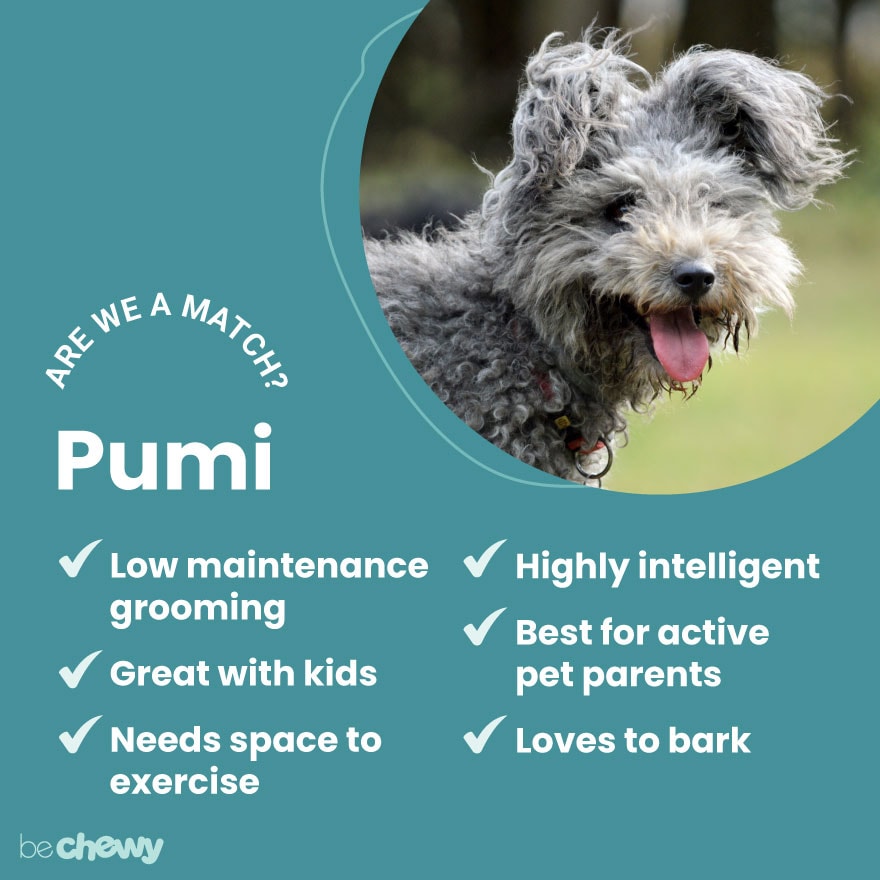
Top Takeaways
The Pumi is a highly intelligent breed with an opinion on everything—and, boy, will they let you know it! A loyal, loving friend is the reward for active pet parents ready and willing to give their Pumi the mental and physical stimulation they need. Oh, and did we mention the gorgeous curls?
Expert input provided by veterinarin Dr. Jackie Sehn, (DVM, CVH, VetMFHom) of MercyVet on Mercer Island, Wash., Karen Beattie Massey CPDT – KA, professional dog trainer at MayaLu Training, Argus Ranch, and Kinship dog training, and Chris Levy, Secretary of the Hungarian Pumi Club of America and owner of Abiqua Pumik.
Breed characteristic ratings provided by Dr. Sarah J. Wooten, DVM, CVJ, a veterinarian at Sheep Draw Veterinary Hospital in Greeley, Colorado; dog trainer and behavior consultant Irith Bloom, CPDT-KSA, CBCC-KA, CDBC, owner of The Sophisticated Dog, LLC, in Los Angeles; and certified animal behavior consultant Amy Shojai, CABC, in Sherman, Texas.
The health content was medically reviewed by Chewy vets.

Search for Adoptable Pumis Near You
Female Names
- Zoey
- Kassi
- Queso
- Paprika
- Tegan
- Bridgette
- Birdie Bee
- Lette
- Yaya
- Orsi
Male Names
- Ziggy
- Gryffin
- Jurgen
- Dexter
- Felix
- Renny
- Harvey
- Ignacio
- Loial
- Iggy
Share:
